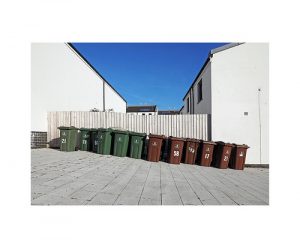Rotational Molding Vs. Blow Molding
As you prepare to create a casting for your product, you have to decide how you’ll build it. Two of the best options are rotational molding and blow molding, with rotational molding being the newer of the two.
Each offers a different process, as well as individual advantages and disadvantages, which influence your productivity, expenses, and quality.
Rotational Molding Process
The rotational molding process focuses on creating multiple parts as one accurate, durable piece. It accomplishes that through temperature and rotation, as well as a release agent to provide a reliable slip. When utilizing rotational molding, you’ll apply your release agent, fill your mold with a hot plastic resin and turn the mold until the resin particles are dry and even — a machine will complete the rotating.
Ask About Our Molding Process and Products
The advantages of rotational molding, whether you use a water- or solvent-based release agent, include:
- Quick Production: As you’re able to produce several components as one product, your production times increase at a substantial rate. That lets you provide shorter lead times for clients, as well as expedite your molding process.
- Sturdy Product: The streamlined production of the rotational molding process provides you with a robust, sturdy product that’s free of weak structure points and features a consistent thickness for walls. In comparison, if you manufactured the parts separately, there would be vulnerable points due to the nature of the design.
- Cost-Effective Process: By increasing your production times and streamlining your product designs, you support a process that’s cost-effective. Plus, rotational molding often requires a small staff size and reduces material waste by delivering a complete item versus components.
- Flexible Output: Via the rotational molding process, you can create and deliver on designs with complex geometries. This feature can help you expand your client base, as well as add a competitive advantage to your operations.

Blow Molding Process
The blow molding process focuses on the procedures established by glassblowers, who shape a tube into a product. In blow molding, a similar process occurs that’s pressure-based. Staff will create pressure, which blows air and powdered materials into a tube and releases agents lubricate. In response, the container produces hollow pieces of plastic that match your mold. While you can create a complete product with this process, such as a soda bottle, it’s not ideal.
Over time, the advantages of blow molding have become less advantageous. It does offer lower costs than rotational molding, but it produces less-detailed products with weak points in their structure, which is a direct influence on your company’s brand. Plus, blow molding tends to require more production time, which takes away from your staff’s productivity. The process of blow melding itself also risks warping because pressure drives it.
Get the Right Release Agent From W.N. SHAW & CO.
Whether you choose to incorporate blow molding or rotational molding into your company, both require release agents to deliver a product with success. If you’re without the proper release agent, such as a silicone release agent, you’re without the necessary tools for molding. That’s why we provide custom-formulated release agents for rotational molding and blow molding. Learn more by browsing our product selection or contacting us.

